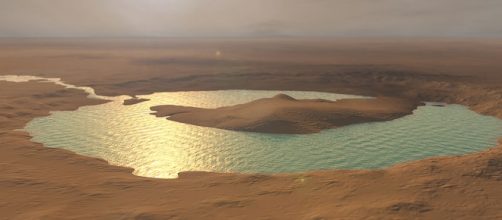NASA's Curiosity rover has been exploring Mars, and our knowledge of the planet has expanded vastly in the past few years. Here are some of the most outstanding discoveries made about the red planet.
Habitability
It´s believed that in ancient times, Mars could have had the right chemistry to have supported microscopic life. By analysing rocks, Curiosity has found oxygen, carbon, sulfur, hydrogen and phosphorous, which are key elements for the development of life. One sample from within a rock also revealed clay minerals and little salt, suggesting that Mars once had flows of water.
Organic carbon in rocks
Carbon, which is necessary for the development of life, was found on powdered rock samples. This finding shows that life could have thrived on the planet in the past. Scientists are still studying the Martian surface for other clues that lead to the discovery of possible life forms.
Methane in the atmosphere
Methane was detected forming in extended plumes and in certain regions. Methane was observed to increase over a two month period. This gas can exist for a limited period before being destroyed; its existence on the Martian atmosphere ranges from 0.6-4 years. Its existence also implies that sources, including volcanic activity, meteorite impacts, or methanogenic microbes, could be producing it.
Radiation health risks
While on Mars, Curiosity recorded radiation which could be fatal for astronauts. This is due to the thin atmosphere in Mars and also to the fact that there is not a protective magnetosphere on the planet, as the one that protects the earth from the harmful energetic particles moving in all directions.
A thicker atmosphere and water existed in the past
Curiosity recordings have discovered that the atmosphere of Mars is enriched with isotopes of carbon, hydrogen and argon, suggesting that the planet has been depleted of its original atmosphere and reservoirs of water. This is believed to have occurred through the interaction between the solar wind and the molecules contained in the atmosphere.
Flows of water in the past
Stratified rock formations on the path of Curiosity and outflow channels suggests that liquid water once existed like rivers and lakes on earth. These types of features indicate that they could have been created by flows of running water resulting from rain or snow in the early history of the planet.

